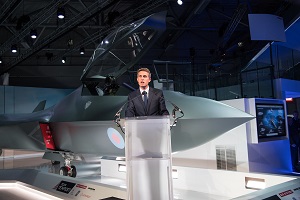
This blog was written by Max Hardy, a graduate industry secondee at ADS Group.
With 2018 having come to a close some of the all-important annual production figures are starting to come to light. In the world of defence some of the most significant of these are those of the F-35 – the biggest and most expensive defence programme in the world of which the UK’s MOD and industry has a large interest in.
These annual figures can show how successfully a product has sold or if there have been any production issues; they also give other nations and analysts an indication as to the health of the programme. As may be expected during industrial ramp up, the delivery numbers of the aircraft are continually increasing year on year as manufacturing processes become more efficient. 2018 saw 91 deliveries to the US and international partners – including most notably to RAF Marham. Overall 10 nations are now flying their own F-35s.
Alike to any other manufactured product, increasing the production rate of a fighter aircraft also means a decrease to the cost per unit. In context this means that the current cost of each ‘A’ variant of $89.2 million is set to decrease to $80 million by 2020 – equating to a substantial saving when ordering fleets the size of the US or UK*. Lockheed Martin has stated that the 2020 cost will match or even be less than the price of a less capable 4th generation aircraft.
A decreased cost is particularly beneficial to the MOD at the moment as a weaker pound has made US imported defence equipment even more expensive – at a time when finances are increasingly tight. A decreasing unit price could also lead to an increase in the fleet size or help fund other capabilities – however it may just make the current spending commitments more affordable. In the UK the political debate over the type and numbers of the F-35 to be operated has been extensive – making it unlikely that there will be any great shift either way.
The notion of higher numbers and lower prices highlighted by the F-35 programme should be noted by the MOD as it is something that hasn’t always been capitalised on in the UK. This idea will be particularly important if Team Tempest is to succeed to its maximum potential. The proposed 6th generation fighter will rely heavily on multiple international orders to be able to adequately balance cutting-edge technology, production mass, and affordability.
The UK will never order in the same numbers as the stand-out global leader the United States, however the biggest benefit could come from UK Government support for export by UK industry, therefore increasing the production numbers without the MOD having to foot the entire bill. Export order continue to be a defining feature of any combat air platform.
However, this concept isn’t limited to the military air domain however and could be rolled out to a number of different defence sectors, notably shipbuilding. As is trying to be achieved with the T31 frigate, if the MOD set requirements that meet their needs but also have exportability in mind, it is more likely that exports can be secured – increasing the production numbers, decreasing the price for the MOD and boosting UK industry.
* The UK has only ordered the ‘B’ variant and not the ‘A’ variant; however similar trends between variants exist.





